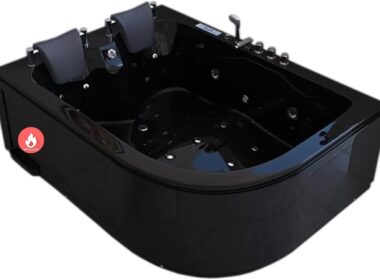Understanding the Hybrid Cloud Environment
In today’s digital age, many businesses are adopting a hybrid cloud environment to leverage the benefits of both public and private cloud solutions. A hybrid cloud environment combines on-premises infrastructure with public and private cloud services, allowing organizations to scale their IT resources, increase flexibility, and improve overall efficiency.
However, managing data security in a hybrid cloud environment presents unique challenges due to the distributed nature of the infrastructure. With data residing across multiple platforms, including on-premises servers, public cloud providers, and private cloud environments, ensuring the security and integrity of the data becomes a top priority for organizations.
Identifying Data Security Challenges
One of the primary data security challenges in a hybrid cloud environment is the increased attack surface created by the distributed nature of the infrastructure. Hackers can exploit vulnerabilities in any part of the hybrid cloud environment, including network connections, APIs, and applications, to gain unauthorized access to sensitive data. This poses a significant risk to organizations, as a breach in one part of the environment can potentially compromise the security of the entire data ecosystem.
Another challenge is maintaining compliance with data protection regulations and standards, such as GDPR, HIPAA, and PCI DSS, which require organizations to implement robust security measures to protect sensitive data. Ensuring compliance across multiple cloud platforms can be complex and time-consuming, especially when each platform has its own set of security protocols and requirements.
Furthermore, the lack of visibility and control over data in a hybrid cloud environment makes it difficult for organizations to monitor and track data access and usage effectively. Without proper data governance and access controls in place, organizations risk data leakage, unauthorized access, and data breaches.
Strategies for Data Security in a Hybrid Cloud Environment
To address the data security challenges in a hybrid cloud environment, organizations must implement a comprehensive security strategy that encompasses the following key strategies:
1. Encryption: Encrypting data at rest and in transit is essential to protect sensitive information from unauthorized access. By implementing strong encryption algorithms and key management practices, organizations can ensure that data remains secure, even if it is compromised.
2. Identity and Access Management (IAM): Implementing robust IAM controls helps organizations manage user access to data and resources in a hybrid cloud environment. By defining roles and permissions, enforcing multi-factor authentication, and monitoring user activity, organizations can reduce the risk of unauthorized access and data breaches.
3. Network Security: Securing network connections between on-premises infrastructure and cloud platforms is crucial to preventing cyber attacks and data breaches. Implementing firewalls, intrusion detection systems, and secure VPN connections can help organizations protect data in transit and detect malicious activity.
4. Data Loss Prevention (DLP): Implementing DLP solutions helps organizations monitor and control sensitive data across the hybrid cloud environment. By defining data classification policies, monitoring data usage, and preventing data exfiltration, organizations can safeguard sensitive information from unauthorized access and leakage.
5. Security Monitoring and Incident Response: Implementing security monitoring tools and incident response processes helps organizations detect and respond to security incidents in a timely manner. By monitoring network traffic, analyzing security logs, and conducting regular security audits, organizations can identify and mitigate security threats before they escalate.
Best Practices for Data Security in a Hybrid Cloud Environment
In addition to implementing security strategies, organizations can adopt best practices to enhance data security in a hybrid cloud environment:
1. Conduct Regular Security Assessments: Regularly assessing the security posture of the hybrid cloud environment helps organizations identify vulnerabilities and weaknesses that could be exploited by attackers. By conducting penetration testing, vulnerability scanning, and security audits, organizations can proactively address security issues and strengthen their defenses.
2. Implement Cloud Security Controls: Leveraging cloud security solutions, such as cloud access security brokers (CASBs), cloud workload protection platforms (CWPPs), and cloud security posture management (CSPM) tools, helps organizations secure data and workloads in the hybrid cloud environment. These solutions provide visibility into cloud assets, enforce security policies, and detect anomalies to enhance data security.
3. Educate Employees on Security Awareness: Training employees on security best practices and raising awareness about the importance of data security helps organizations prevent insider threats and human errors that could compromise data security. By promoting a security-conscious culture and providing ongoing security training, organizations can reduce the risk of data breaches caused by employee negligence.
4. Implement Data Governance Policies: Establishing data governance policies and procedures helps organizations manage data lifecycle, define data ownership, and enforce data retention and disposal practices in the hybrid cloud environment. By implementing data classification, access controls, and data encryption policies, organizations can ensure data security and compliance with regulatory requirements.
5. Engage with Cloud Service Providers: Collaborating with cloud service providers to enhance data security in the hybrid cloud environment is essential for organizations. By understanding the security measures implemented by cloud providers, reviewing service level agreements (SLAs), and conducting regular security assessments, organizations can ensure that their data is protected and secure in the cloud.
Conclusion
Dealing with data security challenges in a hybrid cloud environment requires organizations to implement a comprehensive security strategy, leverage best practices, and engage with cloud service providers to enhance data security and protect sensitive information. By addressing the unique challenges posed by the distributed nature of the hybrid cloud environment, organizations can mitigate security risks, ensure compliance with data protection regulations, and safeguard their data from cyber threats. Embracing a proactive approach to data security and continuously monitoring and enhancing security controls are essential for organizations to secure their data assets in a hybrid cloud environment.
Implementing Zero Trust Security Model
Zero Trust is a security model that assumes no user or device can be trusted, whether inside or outside the network. In a hybrid cloud environment, implementing a Zero Trust security model involves verifying and validating every access request, regardless of the user’s location or device. By implementing strict access controls, continuous authentication, and micro-segmentation, organizations can reduce the risk of unauthorized access and data breaches in a hybrid cloud environment.
Utilizing Security Orchestration, Automation, and Response (SOAR)
SOAR platforms help organizations streamline security operations by automating repetitive tasks, orchestrating security processes, and responding to security incidents in real-time. In a hybrid cloud environment, leveraging SOAR capabilities can help organizations detect and respond to security threats more effectively, reduce response times, and improve overall incident response efficiency.
Implementing Secure DevOps Practices
DevOps practices focus on integrating security into the software development process from the outset, rather than treating it as an afterthought. In a hybrid cloud environment, implementing secure DevOps practices helps organizations build security into their applications and infrastructure, identify and remediate security vulnerabilities early in the development lifecycle, and ensure continuous security testing and monitoring throughout the deployment process.
Enhancing Cloud Visibility and Monitoring
Ensuring visibility into cloud assets and monitoring cloud environments is essential for identifying and responding to security threats in real-time. By leveraging cloud monitoring tools, logging and auditing capabilities, and security information and event management (SIEM) solutions, organizations can gain insight into their cloud infrastructure, detect security incidents, and investigate security breaches to enhance security posture in a hybrid cloud environment.
Establishing Incident Response and Business Continuity Plans
Preparing for security incidents and disruptions is crucial for organizations operating in a hybrid cloud environment. Establishing robust incident response and business continuity plans helps organizations respond effectively to security breaches, minimize the impact of disruptions on business operations, and recover quickly from incidents. By conducting regular incident response drills, preparing for worst-case scenarios, and documenting response procedures, organizations can improve resilience and mitigate the consequences of security incidents.
Embracing a proactive approach to data security and continuously monitoring and enhancing security controls are essential for organizations to secure their data assets in a hybrid cloud environment.
#Dealing #Data #Security #Challenges #Hybrid #Cloud #Environment
















